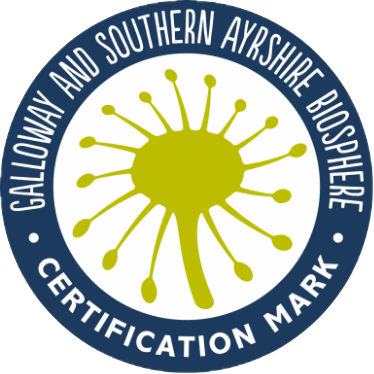Inks for lino - Oil or water based?
Oil based
I use Cranfield’s traditional oil-based relief inks as I find them reliable, easy to use and they come in a wide range of colours. The range includes extender and a tack reducer (as described below). I use oil based inks for all my own work. They are very easy to use and they stay open when mixing for days. They will give crisp clean results on detailed work and are easier by far than water based ink if you want to print large sheets of perfectly smooth colour. As a rule, what you see on the slab is what you see on the finished print so colour mixing is simple and they allow you to work light over dark very successfully. Oil based inks also make it possible to print many layers without cockling the printing paper. The inks themselves are quite thick and can be very stiff to handle in cold weather. I often pop mine on top of the radiator to loosen up in the winter.
Caligo Safe Wash inks
These are made by Cranfield using exactly the same pigments as their traditional oil based inks, but can be cleaned by washing with soap and water. They are completely compatible with the traditional oil based range, but you will need to clean with white spirit if you are mixing the two ranges. These inks offer all the benefits of traditional inks and, like them, will require a drier to speed up much slower drying times. The range of colours available is smaller than that of the traditional relief inks.
Water Based
I have used several makes of water based inks: Graphic Chemical, Cranfield, Lukas (formerly Nerchau) and Schminke. They wash off the block very easily with just a damp rag and have fast drying times. The real difference between them is the texture. Graphic Chemical are very much closer in texture to oil based ink, being reasonably stiff (though all inks vary depending on the pigments involved – oil based yellow ochre flows like emulsion paint, while the same in sepia has to be taken from the bottom of the tube as it is too stiff to squeeze it from the top. I find this variation very pleasing in a world where so many things are uniform). Schminke are much closer to fluid paint. I do mix different sorts, but be warned that this doesn’t work for everyone and I have found some pigments can curdle slightly and some become sticky and may tear the paper when you come to print. You’ll need to experiment.
Most types come with extender. The main difference to oil based ink I find is in the way the colour behaves. For me, using water based ink is similar to using watercolour. Here the extender dilutes the inks as water will, while the white ink makes the colour chalky. While I usually include a fair bit of white when mixing oil based colours, I rely much more on extender to make colours paler with water based ink. You will find the looseness of watercolour inks a bit alarming if you are used to the stiffness of oil based and vice versa, good rollers (more about them later) and patience are the answer. I allow a few seconds more under the press with the water based inks to allow them to soak a little into the paper.
Schminke make a glaze which gives a gloss to its inks, though I love the matt quality of water based ink. They also do metallic colours which are subtle and rather nice.
There are a few additional products which will make life easier.
Cobalt Dryer: this pretty purple liquid comes in a little bottle and a drop will speed the drying time of your inks from days to hours. By a drop I mean that to a tablespoon of ink I would use a scant match head’s worth of cobalt. More precise advice comes with the dryer. Don’t drink it or splash it about!
Tack reducer: you may have to ask for this at Intaglio. It is a substance which looks like vaseline and, when added to ink, makes it slippery and more liquid. I use it for printing large thin sheets of ink. It’s also very useful on very cold days if the ink is stiff. However, use too much or use on a very detailed block and the ink can run into fine lines and details.
Extender: this is simply the equivalent of adding bulk to oil based inks without adding colour. It also serves to make the inks transparent. The more extender you use the stickier the inks will get and if you push it to extremes, things can get a bit blotchy and the ink will be hard to roll out. I often use extender in combination with tack reducer as the reducer gives the fluidity and the extender the transparency without either substance compromising the ink too much.
Drying Retarder: this does exactly what it says and will keep water based inks open on the mixing slab which can be a life saver on a hot dry day or when working in a group class.

